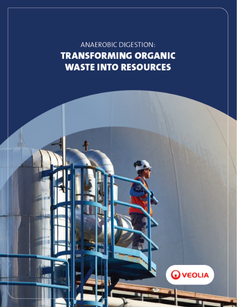As Canada faces mounting waste management pressures, waste-based energy (WbE) technologies are emerging as a critical part of the solution. WbE encompasses a range of methods that recover energy from waste materials—solid, organic or residual—through thermal, biological or chemical processes. These include waste-to-energy incineration, anaerobic digestion, and the production of refuse-derived fuels (RDF). By turning waste into usable forms of energy like electricity, heat, biofuels and renewable natural gas, WbE supports diversion of materials to landfill, greenhouse gas emissions (GHG) reduction and circular economy goals.

Advancing Waste-to-Energy in Canada
Among the most established WbE solutions are modern waste-to-energy (WtE) facilities, which have evolved significantly beyond traditional incineration. These facilities can reduce waste volume by up to 90%, while producing consistent low-carbon energy, and enable the recovery of metals and use of bottom ash for construction materials.
Canada is fortunate that many of the existing WtE facilities are relatively new or being expanded and retrofitted with capital improvements to meet stringent air emission and other environmental regulatory measures.
Refuse-derived fuel (RDF) facilities are in use across the globe providing alternative low carbon fuel sources to generate energy, heat and fuels.
Anaerobic Digestion: A Fit for Organic Waste and Cold Climates
Another promising WbE approach is anaerobic digestion (AD) which has proven especially effective in Canadian communities. Operating like a natural composting system in an oxygen-free environment, AD uses microorganisms to break down organic waste—such as food scraps, agricultural residues and sewage sludge—into two valuable products: biogas (a form of renewable natural gas) and digestate, a nutrient-rich byproduct usable as fertilizer.
Anaerobic digestion is well-suited to Canada’s cold climate, able to function effectively even in low temperature environments. It also supports provincial and municipal organic waste diversion mandates while displacing fossil fuels for heating, electricity and transportation. As more municipalities seek to cut methane emissions and increase diversion from landfills, AD is becoming a cornerstone of local sustainability strategies.

Ecofactories: Integrated Waste and Water Resource Hubs
A more holistic model gaining traction is the Ecofactory: an integrated resource recovery facility that combines wastewater treatment with WbE processes. These facilities transform conventional infrastructure into multi-output hubs that generate energy, recover materials and support sustainability goals.
Ecofactories typically deliver value across five key areas:
- Green energy and operational efficiency
- Water reuse and recycling
- Resource regeneration (e.g., phosphorus, biosolids)
- Carbon footprint reduction
- Community-centered environmental stewardship
This model is especially valuable for remote or high-energy-cost regions, where maximizing local resources is critical. By recovering energy from biogas, reusing treated water and reducing waste sent to landfill, Ecofactories convert what was once a cost center into a source of economic, environmental and social value—including job creation, education opportunities and increased resilience.
Overcoming Implementation Challenges
Despite their potential, WbE technologies face important implementation barriers in the Canadian context:
- High capital costs, particularly when compared to low-cost landfilling
- Public opposition, often due to siting concerns or outdated perceptions of incineration
- Gaps in infrastructure and municipal policy and regulatory support
International case studies show that these challenges can be overcome. The Leeds Recycling and Energy Recovery Facility (RERF) in the UK, for example, succeeded by combining transparent operations, community engagement and local economic benefits to build trust and lasting support.

Policy and Regulatory Support
Canada’s policy and regulatory landscape is gradually aligning to support WbE. Provinces are implementing stricter organic waste diversion targets, while carbon pricing and renewable energy standards are improving the economics of waste conversion. Provincial and municipal governments are recognizing the importance of proper zoning and alternative energy production in enabling these projects.
Tools such as incentives to divert materials from landfill, promotion of green energy and infrastructure funding programs can further improve the financial viability of WbE, especially in areas with aggressive climate action plans.
Building a Sustainable Future
Waste-based energy is not a silver bullet for all of Canada’s waste management needs, but it is a powerful enabler in Canada’s transition to a more resilient and circular economy. When integrated with upstream efforts like waste reduction and recycling, WbE technologies offer communities the means to meet environmental goals while extracting value from unavoidable waste.
With the right combination of policy alignment, technological innovation and public engagement, WbE can reduce emissions, enhance energy independence and convert waste liabilities into long-term assets. As Canada moves forward, these solutions are poised to become a core pillar of national sustainability efforts.



